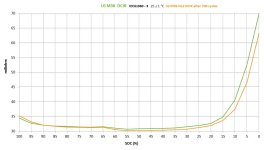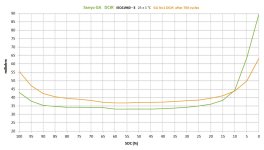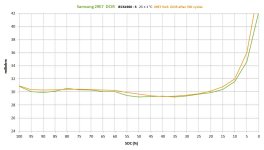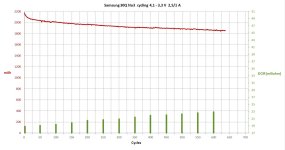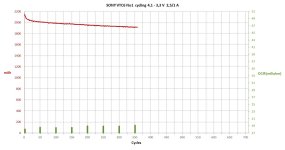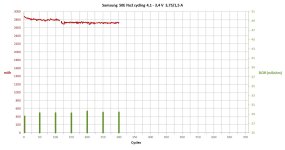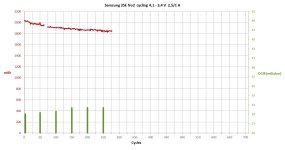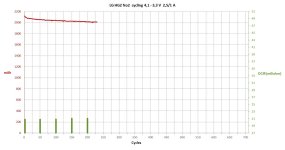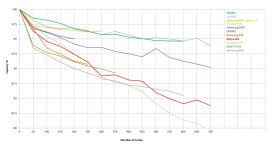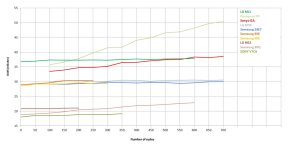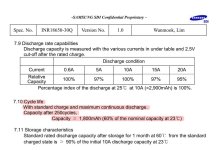goatman
10 MW
docware said:Here is Samsung 30Q No 3 condition before the cycling :
https://endless-sphere.com/forums/viewtopic.php?f=14&t=103092&p=1513064#p1513064
Cycle No 1 had 2180 mAh, average at cycle 535 is 1880 mAh.
I find this interesting on whether to baby a 30q or not to baby it. if I look at the ah produced by the cell on your tests after 550 cycles, starting with 2180mah and now 1880 mah. take average mah 1980x 550 cycles, it has produced 1089 ah's
okashira 95% DOD at 7amp discharge/2amp charge started at 2800 mah and after 540 cycles was about 2100mah. average 2450mah x 540= 1323 ah's produced. also watt hours were 8wh at start and 6wh after 540 cycles. average 7wh x 540= 3787wh.
if im weed infesting let me know and ill stop after this post. if I average 20wh/km, that battery could have gave me 189.35kms so if I had a 20s10p pack/ 200 cells I would've been able to travel 37870 kms
after 700 cycles the average mah was 2375= 1662.5ah or 47587.9kms.
your cell so far is 1089ah or 31171.9kms travelled.
the pack is charged twice as fast and discharged 3 times faster.
I guess this is more like a race between a turtle and a rabbit, at 7 amps I could've travelled 37870 kms probably 4 times faster than 2amps for 31171kms, are you going to test the 30q to 700 cycles?



